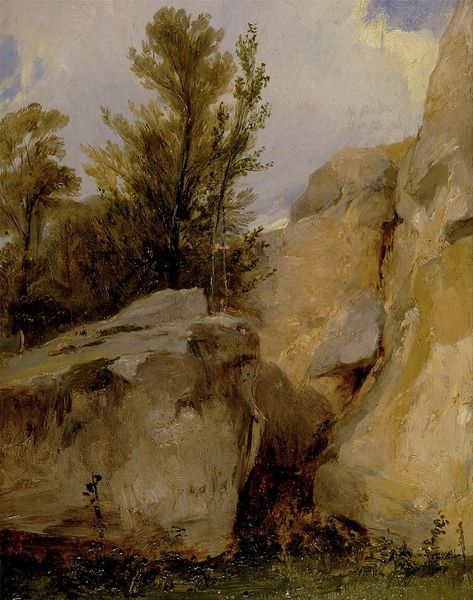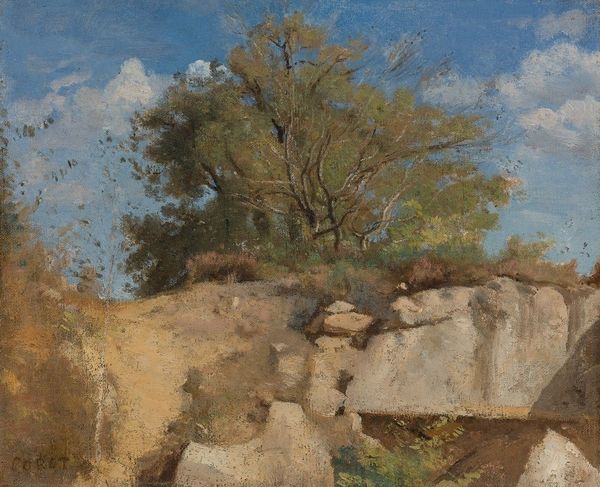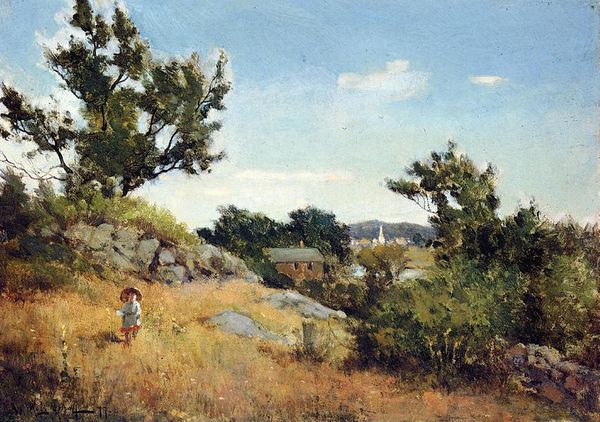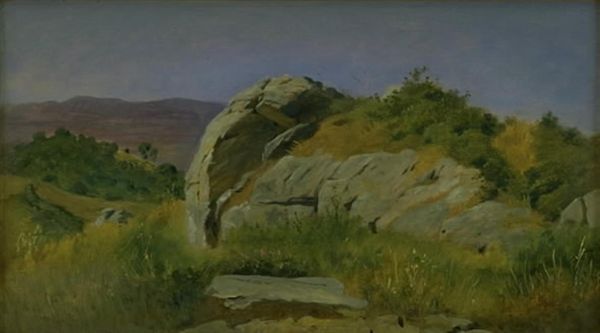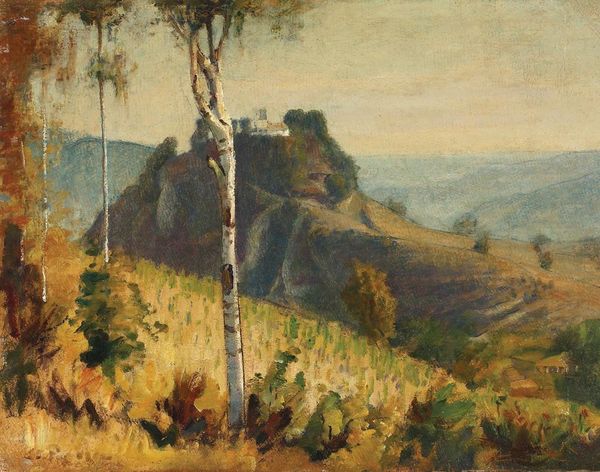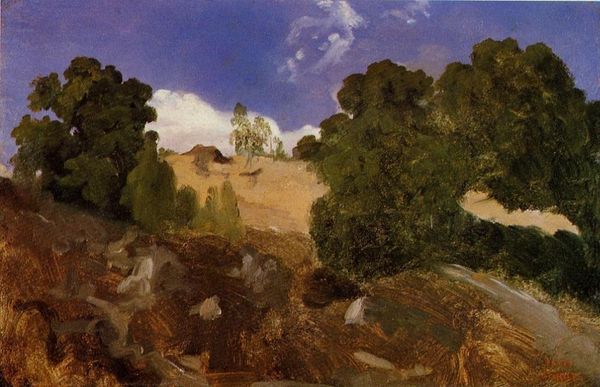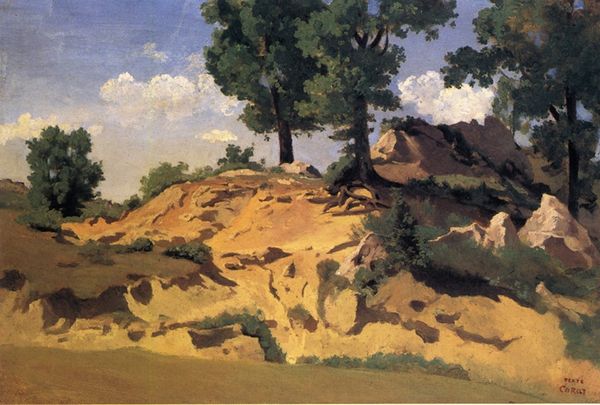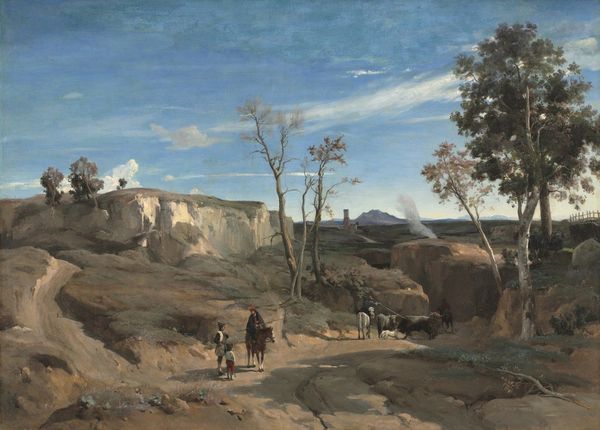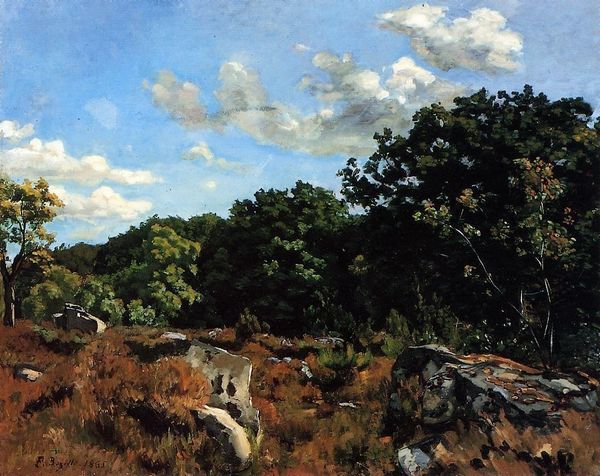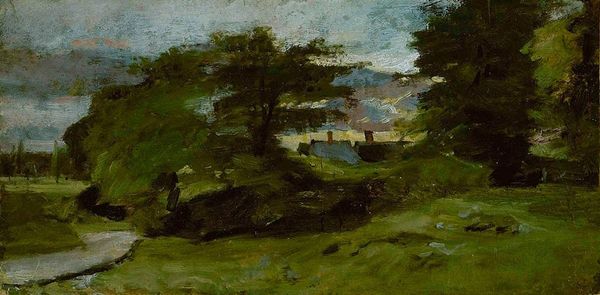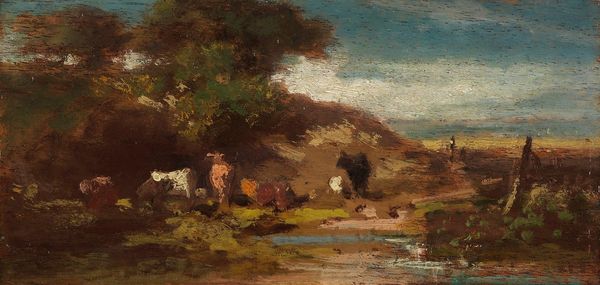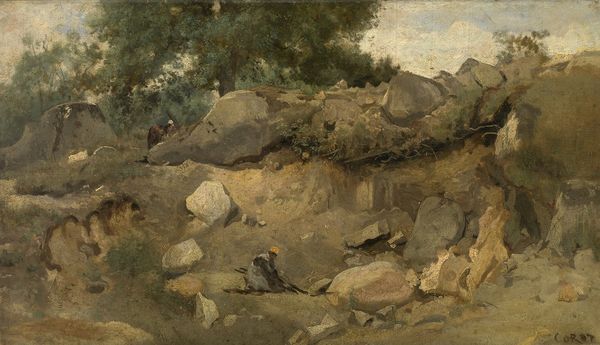
painting, plein-air, oil-paint
#
sky
#
painting
#
plein-air
#
oil-paint
#
landscape
#
oil painting
#
rock
#
romanticism
#
realism
Copyright: Public domain
Curator: This oil painting, simply called "Stoller in the Fontainebleau Forest", is thought to be by Camille Corot. Editor: My first thought is of raw, earthy materiality— the painting feels less like a vista and more like encountering solid, chunky rocks head-on. The thick paint application really emphasizes the tangible presence of the stone. Curator: That directness is interesting to me, given the historic context. Corot was part of the Barbizon school, who were really pushing back against idealized landscapes, striving for a more immediate representation of nature, working en plein air. Editor: And that emphasis on working outside surely shaped the materials. Oil paint gave Corot the flexibility to capture the quickly shifting light and shadows on the rock formations, the textural variation really brings out their geological essence. Did this approach alter artistic patronage, making art more democratic, since landscape gained importance? Curator: Landscape became popular with the burgeoning middle class during the 19th Century, particularly the images of rural, often non-industrial areas. The urban population increasingly longed for connection with an idealized natural environment. The state certainly played a role. There was government support for artists depicting national landscapes. Editor: Right, you've got the rise of industrial production against it the nostalgic, aesthetic consumption of untouched nature as depicted by artists using industrial, commercial products, like processed pigments and prepared canvases. Look how those raw umbers and ochres dominate. I bet it's that earthiness which provided relief from the harsh realities and dirt of industrialized cities. Curator: Exactly. Think about the Romantic and Realist movements converging here: an almost scientific observation of the geological forms alongside the emotional weight of nature's grandeur. Editor: It's this interplay between geological monumentality, art as artifact, and fleeting, plein air techniques that captures me. It feels both ancient and modern. Curator: Indeed, it's a moment where art is pulled between nature's timelessness and the concerns of its modern audiences. Editor: A push and pull felt even in Corot’s chosen media. It's like looking at the future in a piece of the past.
Comments
No comments
Be the first to comment and join the conversation on the ultimate creative platform.
